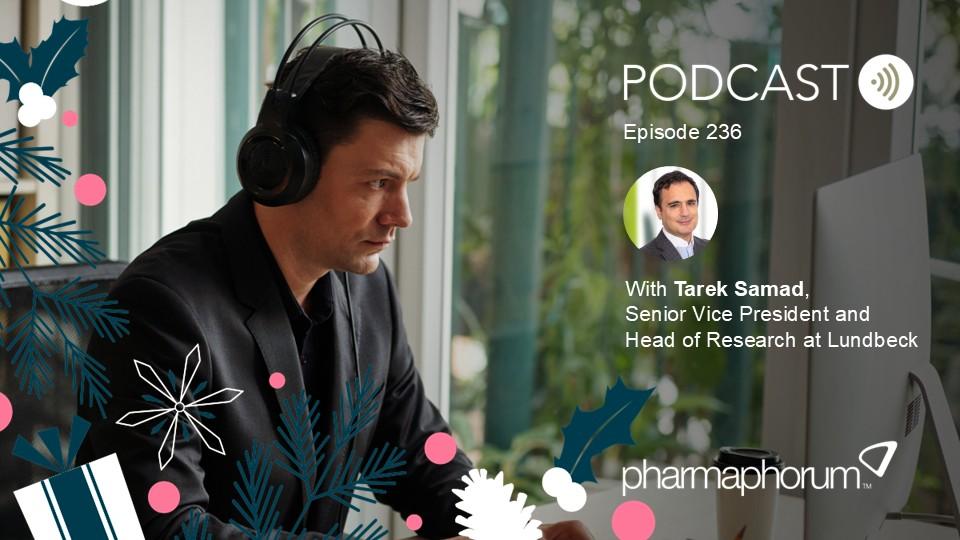Combating chronic diseases through technology and collaboration

By 2050, 2.1bn people globally will be aged 60 or over. That’s more than double the 962m recorded in 2017. This lengthening of life is closely linked to the dramatic increase we’re seeing in degenerative cognitive conditions, such as dementia. According to the Office for National Statistics (ONS), dementia, including Alzheimer's disease, is the leading cause of death in England and Wales, with one in eight British citizens now dying from the disease.
At the same time, lifestyle factors such as mass urbanisation, easily available convenience food and an increase in sedentary working patterns, are all contributing to the rise of chronic conditions, including diabetes, heart disease and pain.
As healthcare systems buckle under the pressure, more must be done to empower global consumers to take better care of their own health and reduce their propensity to preventable chronic conditions.
Consumer healthcare companies are turning to digital technologies to help meet this requirement. A recent report from RB, Consumer Health Futures, catalogues the vast array of advanced technologies, including artificial intelligence (AI), robotics and nanotechnologies, which are expanding the arsenal available to healthcare innovators. However, accessing this will demand collaboration.
Bringing the next generation of digitally enabled healthcare solutions to life will depend on breaking down silos in the healthcare sector and blending expertise from across disciplines. At RB we’re working with external partners, including technologists, consumer behavioural specialists and industry to augment our existing knowledge and fully unlock digital technologies’ potential.
Below we look at the crucial role that digital technologies are already playing in combating chronic conditions and how they could evolve in future to deliver the next generation of preventative healthcare solutions. But only if we can work together.
AI disrupts diagnostics
The past decade has witnessed extreme advancements in AI and machine learning (ML) algorithms. These are enabling healthcare teams to analyse the reams of data generated through genetic testing, clinical trials and health records to identify patterns and trends within it.
This data insight is already being harnessed in the field of personalised nutrition, where it’s helping healthcare professionals identify where personalised solutions will be effective – and cost effective.
Moving forward, we fully anticipate that the same principles will be applied to chronic conditions, immeasurably improving the effectiveness of treatments.
AI’s potential to identify chronic health problems extends beyond the lab though. Babylon Health’s AI-enabled app achieves a score of 81% on a diagnosis exam, compared to a five-year average score for human clinicians of 72%. This accuracy is giving people huge confidence in AI, so that we’re likely to see the diagnosis of more and more health conditions entrusted to the technology.
As AI algorithms become more predictive, they’ll enable individuals to assess their vital measurements in real time. Smart phones could track users’ heart and respiratory rates, hydration, blood pressure and blood sugar levels, potentially helping them recognise when they are at risk from chronic health conditions before they even occur.
Such predictive solutions hold huge potential to benefit global consumers, healthcare systems and economies. However, this will only be realised if they are credible and effective. Consumer healthcare providers must work closely with data scientists, technologists and a whole host of other specialist parties to ensure that any applications bought to market meet the expectations of consumers, industry and regulators.
Fending off cognitive degeneration
Digital technologies will also play an increasing role in preventing degenerative brain diseases such as dementia. We’re seeing consumer healthcare companies enter into the brain and cognition space, for example through app-based brain training elements that assess users, identify specific areas for cognitive improvement and provide personalised training regimes based on the results.
The development and deployment of such hybrid solutions presents a significant step for the consumer healthcare sector and demonstrates why interdisciplinary collaboration will be vital to combating chronic conditions, such as dementia, in future.
Technology will also soon be capable of identifying the initial signs of degenerative conditions. As more devices connect through the Internet of Things (IoT), homes of those more susceptible to these conditions will become equipped with a suite of connected products that can monitor health and provide help where necessary.
Soon sensors will be widely used to recognise when someone has fallen over in the home, while voice recognition software, such as Alexa, could detect the verbal clues demonstrated by people in the early stages of degenerative diseases, such as Alzheimer’s and Parkinson’s.
Monitoring becomes skin deep
Around the world, wearable technologies are being embraced by consumers eager to take their health into their own hands. The tracking of food and exercise is now a normality for many as they seek to understand how to control and improve the lifestyle factors that play a part in defending against chronic conditions.
Recognising the phenomenal potential of wearables to engage an increasingly tech savvy public, the NHS has deployed fitness trackers as part of a pilot programme to help manage diabetes. In a trial targeted at those at risk, devices were used to monitor individuals’ exercise levels and enable them to set and monitor goals. 68% of those referred to pilot digital schemes engaged in the programme, compared with about half of people offered face-to-face support.
While significant, such use cases only hint at wearables’ potential to improve users’ health. Engineers at Rutgers University have developed a microchip designed to be integrated into personal devices, such as an Apple Watch, able to analyse sweat for different biomarkers and notify wearers of signs of ill health.
Meanwhile, a team at the Technical University of Munich in Germany is working on a more permanent monitoring solution. Here, researchers have identified three chemical sensors which, when injected into the skin, change colour in response to biomarkers such as glucose. With high glucose levels a sign of poorly managed diabetes, this ‘tattoo’ could provide an incredibly effective prompt for wearers to take reparative action.
Addressing the problem of pain
While pain is associated with a vast range of chronic health problems, it is also a chronic condition in itself, impacting one in five adults worldwide.
Over the coming decades, localised pain relief will be taken to the next level thanks to increasing consumer acceptance of high-tech solutions and advances in nanotechnologies, which allow the use of materials at a molecular or even subatomic level. These will make possible personalised – and therefore incredibly accurate – diagnosis and treatment.
Researchers are already working on a technique where minute amounts of over-the-counter pain medication are inserted into microscopic carriers called nanoparticles. These can then be injected into sufferers’ own immune cells and travel through the body to identify where there is inflammation and pain relief needed.
We also expect to see ingestible smart pills modified to include sensors made from naturally occurring materials. These will monitor things such as stomach acid and body temperature, notifying users if action needs to be taken to manage their health.
Collaboration driving innovation
While the current and future solutions discussed above vary hugely in their remit, they all have one thing in common; they all display the incredible potential of digital technologies in the fight against chronic conditions. Unlocking this will only become more critical as chronic health conditions multiply and global healthcare systems buckle under their weight.
Pooling expertise in the healthcare sector and driving interdisciplinary collaboration will be key. None of the solutions discussed are impossible, but bringing them to fruition and then into the hands of global consumers will demand researchers, clinicians, technologists, ingredients specialists and many more parties to work together.
It is only by combining forces that we can fast-track the future of healthcare and stand a real chance of combating chronic conditions.
About the author
David Evendon-Challis is VP innovation at RB.











